Key Takeaway:
- Apple releases at least one new iPad generation every year, with new generations usually having better performance and new features.
- The four main iPad models are the iPad, iPad Mini, iPad Air, and iPad Pro, each of which has different features and screen sizes to cater to different user needs.
- The standard iPad has had nine different generations, with the latest addition using the A14 Bionic chip and a 10.9″ screen size with a True Tone feature and improved front-facing camera. Baseline models offer 64GB of storage, but 256GB is also available.
- The iPad Mini has had six different generations, with the latest 6th generation having an 8.3″ screen size and A15 CPU.
- The iPad Air has had five different generations, with the latest 5th generation having a 10.9″ screen size and M1 CPU.
- Discontinued iPad generations can still be found at other retailers.
Introduction to Apple’s iPad line of Tablet Computers
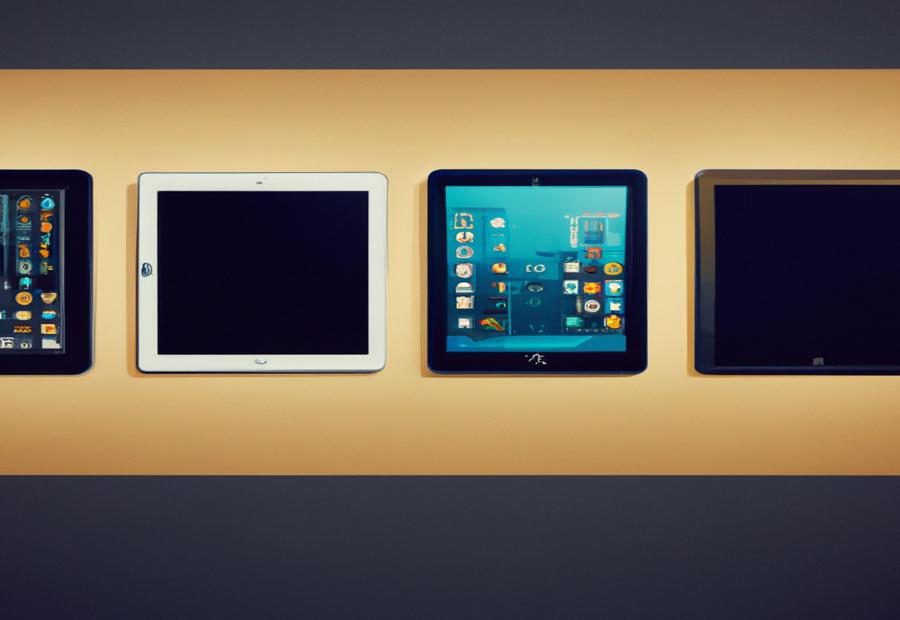
Photo Credits: Ipadmodels.Org by Gabriel Green
Apple’s iPad line of tablet computers has indeed been a massive success since its introduction in 2010. Over the years, the iPad has undergone significant development and evolution to become a versatile tablet with advanced features and innovations that define the product line.
Overview of the iPad line’s evolution and development
Apple’s iPad line of tablet computers has grown a lot since its release in 2010. Every model has different specs, sizes, and functions. The four main models are the regular iPad, iPad Mini, iPad Air, and iPad Pro.
The iPad changed the mobile computing industry with its touchscreen design and affordability. Apple listens to customers’ feedback and makes changes accordingly. Accessories like cases, keyboards, and styluses can be bought to improve user experience.
Apple’s innovation in iPads has given users features like high-quality visuals and multi-tasking. This made them one of the top-selling tablet brands globally. When buying an iPad, it is important to consider budget and intended use.
iPad Models by Year: An Overview

Photo Credits: Ipadmodels.Org by Zachary Scott
Apple has made significant contributions to the tech industry with the introduction of the iPad. To understand the evolution of this iconic device, let us take a closer look at the release dates of various models. This overview provides a brief history of all iPad models. With this information, we can track the progress of iPads over the years, from the first release to the latest model.
Brief history of iPad models and their release dates
The iPad line of tablets has an impressive history, starting from its launch in 2010. Every new model brought innovative tech and remarkable improvements, making it one of the most popular devices today. To help you understand its development, we created a table with info about each model.
The following table shows the different models of the iPad along with their launch year, key features, and iOS version:
| Year | Model | Key Features | iOS Version |
|---|---|---|---|
| 2010 | iPad (1st gen) | Big Screen | iOS 3.2 |
| 2011 | iPad 2 | Front and back camera | iOS 4.3 |
| 2012 | iPad (3rd gen) | Retina display | iOS 5.1 |
| 2012 | iPad Mini (1st gen) | Smaller screen size | iOS 6.0.1 |
| 2013 | iPad Air | Slim design | iOS 7.0.3 |
| 2014 | iPad Air 2 | TouchID Sensor | iOS 8.1 |
| 2015 | iPad Pro (12.9-inch) | Apple Pencil, optimized for professionals | iOS 9.1 |
| 2016 | iPad Pro (9.7-inch) | True Tone Display | iOS 9.3 |
| 2017 | iPad (5th gen) | larger touchpad | iOS 10.3 |
| 2018 | iPad (6th gen) | Apple Pencil support | iOS 11.3 |
| 2018 | iPad Pro (3rd gen) | FaceID Sensor, USB-C port, edge-to-edge display | iOS 12.1 |
| 2019 | iPad Mini (5th gen) | A12 Bionic Chipset, Apple Pencil support | iOS 12.2 |
| 2019 | iPad (7th gen) | larger screen size | iOS 13.1 |
2010 saw the first iPad’s launch. It had a big screen and ran iOS 3.2. The following year, the iPad 2 was released with a front and back camera, plus iOS 4.3. Then came the iPad (3rd gen) in 2012 with its Retina display, and the iPad Air in 2013. This one had a slim design and ran iOS 7.0.
2015 was the year of the iPad Pro (12.9-inch). It was focused on art professionals and had iOS 9.1 plus the Apple Pencil. 2016 saw the launch of the iPad Pro (9.7-inch), with True Tone display and iOS 9.3. In 2017, we had the iPad (5th gen), with larger touchpad and iOS 10.3. Plus, the 2012 iPad Mini, for those wanting something smaller.
Each model has seen good improvements and upgrades, mainly in displays and cameras. Apple offers a wide range so every tablet lover can find what they need.
The Four Main iPad Models: iPad, iPad Mini, iPad Air, and iPad Pro
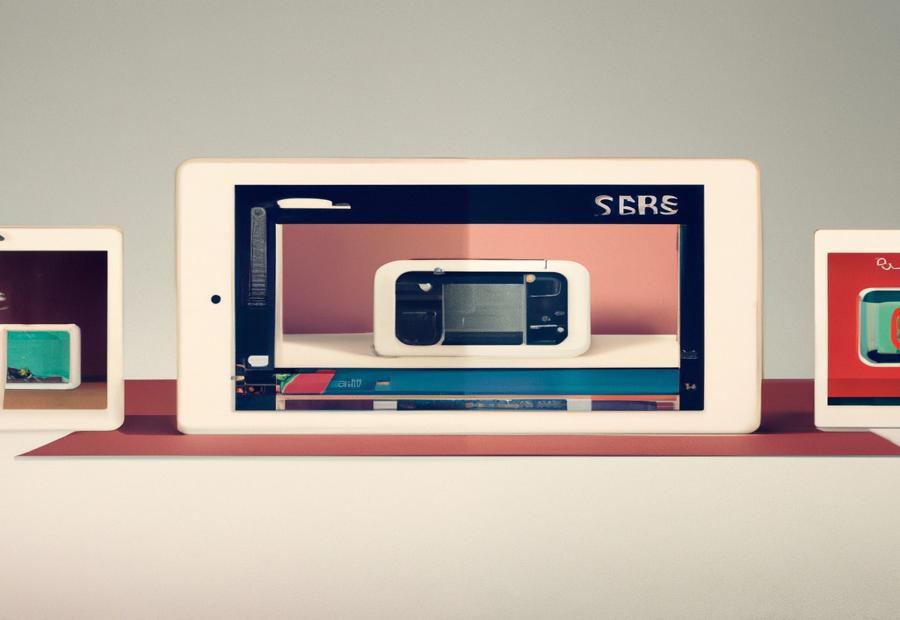
Photo Credits: Ipadmodels.Org by Larry Thomas
Apple has made significant advancements in innovation and design, particularly with their iPad models. This section examines the four main iPad models: iPad, iPad Mini, iPad Air, and iPad Pro. By comparing their main features and differences, we aim to give you a better understanding of what distinguishes them.
Comparison of the main features and differences of each model
The iPad lineup consists of four models – the iPad, iPad Mini, iPad Air, and iPad Pro. To make a smart choice, it’s important to know the features and differences of each one. We’ll help you by providing a comparison table of the main features like screen size, resolution, storage, battery life, camera quality, and price range. You can use this to decide which model fits your budget and needs.
The biggest difference is between the iPad Mini, which has a smaller screen, and the iPad Pro, which has bigger screens. All devices have the same core specs, so the Apple eco-system works perfectly.
Specifications are important, but other factors can affect your decision. Think about your preferences, habits, and upcoming models. You don’t want to buy the wrong model and have to buy extra accessories. So, prioritize understanding your needs before buying. Professionals have found this helpful in the long run.
To sum up, make sure you understand the features and differences of each iPad model before buying. This way, you can pick the one that meets your needs. Why settle for one iPad when you can have nine?
Regular iPad: Nine Different Generations with 9.7″ to 10.9″ Screen Sizes
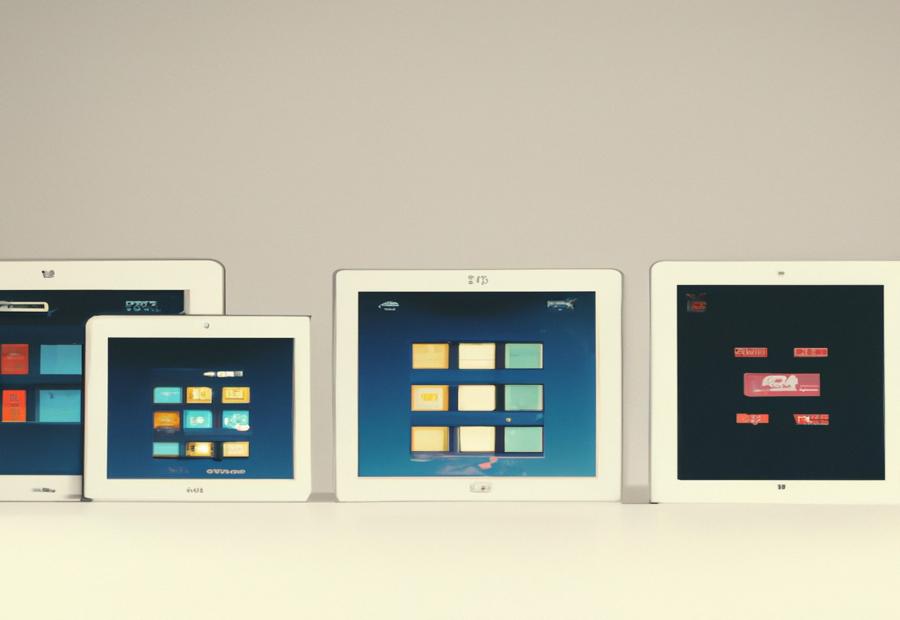
Photo Credits: Ipadmodels.Org by Ryan Campbell
Apple’s iPad has come a long way with twelve different generations, each with varying screen sizes that range from 7.9 inches to 12.9 inches. In this section, we will explore the key specifications and improvements made in each generation so that consumers can make informed decisions when choosing the right iPad for their needs.
Key specifications and improvements of each generation
The iPad has nine generations with a screen size of 9.7″ to 10.5″, while the iPad Mini has six generations with sizes from 7.9″ to 8.3″. Display, processing power, and battery life have improved. Modern features include cameras, fingerprint recognition technology, and Apple Pencil support.
The iPad Air has five generations with a 9.7″ to 10.9″ screen size. The iPad Pro has six generations, from 9.7″ to 12.9″. They are both more powerful, have better cameras, and better touch screen surfaces.
As of Q2 2021, Apple leads the global tablet market with 30% market share. This data is according to Statista.com.
iPad Mini: Six Different Generations with 7.9″ to 8.3″ Screen Sizes
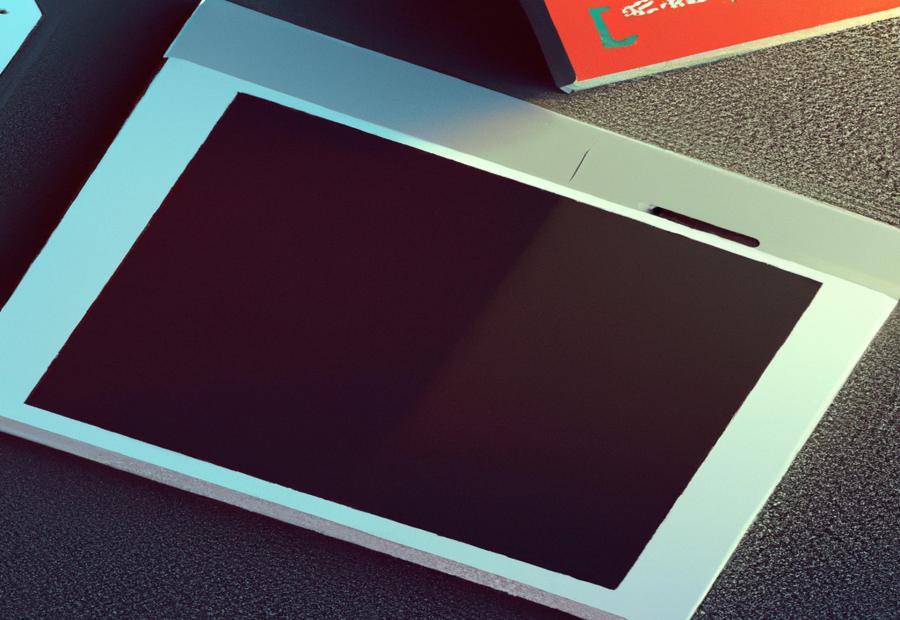
Photo Credits: Ipadmodels.Org by Anthony Martin
With six different generations and screen sizes ranging from 7.9″ to 8.9″, the iPad Mini has come a long way since its inception. In this section, we’ll explore the key specifications and improvements of each generation, giving you a better understanding of the evolution of this iconic tablet.
Key specifications and improvements of each generation
Apple has released many iPad generations, each with its own specs and advantages. This article provides a table and info on the distinctive details of each model.
The regular iPad has a 9.7″ (1st-6th gen), 10.2″ (7th-8th gen), or 10.5″ (Air) display. It uses an A9 (1st-6th gen) or A12/A14 Bionic chip with neural engine (7th-8th gen and Air). Storage is up to 1TB. It features Touch ID fingerprint scanner (1st-5th gen) or Face ID facial recognition technology (6th-8th gen, Air) for authentication.
The iPad Mini has a 7.9″ display size across all generations and uses an A5/A8/A12 Bionic chip with M12 coprocessor. Storage is up to 256GB. Authentication is Touch ID fingerprint scanner.
The iPad Air has a 9.7″ (1st-2nd gen), 10.5″ (3rd-gen), or 10.9″ (4th-5th gen) display. It uses an A7/A8/A12 Bionic Chip & M16 Coprocessor. Storage is up to 512GB. Authentication is either Touch ID/Home Button (1st-3rd gen) or Touch ID/Side-button (Air4).
The iPad Pro has a 9.7″ (1st-2nd gen), 10.5″ (3rd-gen), 11″ (4th-5th gen), or 12.9″ (all generations) display. It uses an A9X/A10X/A12Z Bionic Chip with M9/M10/M12 coprocessor. Storage is up to 1TB. Authentication is Face ID facial recognition technology.
Apple regularly adds new and improved features to their iPads. Buyers must consider each model’s unique qualities before buying, from everyday users to professionals, artists, and students. This article provides key specs and improvements of each generation to help buyers decide.
iPad Air: Five Different Generations with 9.7″ to 10.9″ Screen Sizes
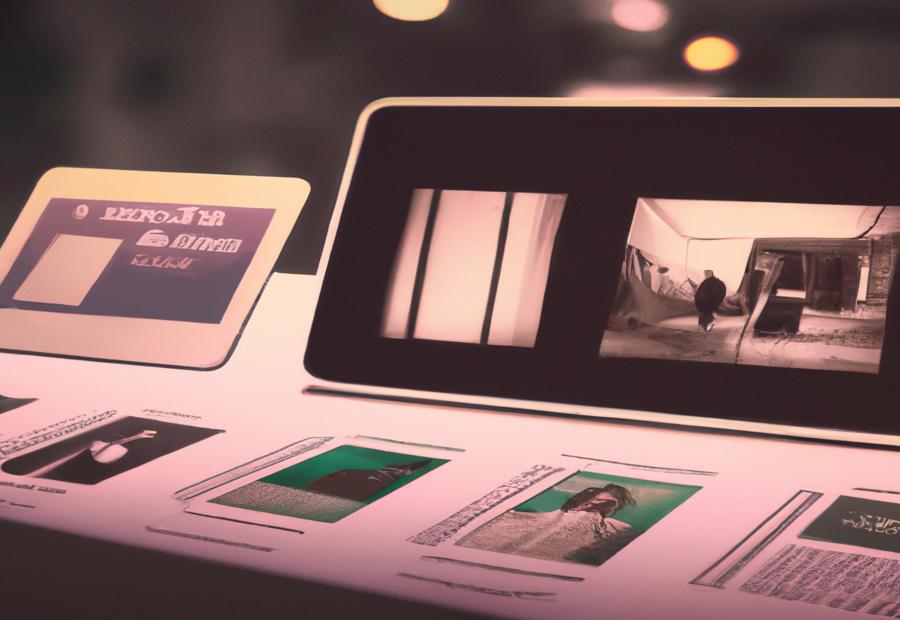
Photo Credits: Ipadmodels.Org by Adam Young
The iPad Air has indeed undergone significant changes since its original launch. There have been five different generations of the device to date, each boasting screen sizes that ranged from 9.7 inches to 10.9 inches. In this section, we will carefully explore all of the essential specifications and improvements made to each generation so that you can make an informed and well-considered decision when choosing the best iPad Air for your specific needs.
Key specifications and improvements of each generation
The iPad has had lots of changes and improvements. It’s key to know the specs and features of each gen. So, to help users, we made a detailed table with info like screen size, resolution, processor, storage, camera quality, battery life, connectivity, and more.
The regular iPad has had nine gens with special features. For example, facial recognition tech was added to newer models. Screen sizes were 9.7″ to 10.9″. The iPad Mini had six gens with sizes 7.9″ to 8.3″. This had “True Tone Display” as a unique feature. The iPad Air had five models with sizes 9.7″ to 10.9″. It had Touch ID on earlier models and USB-C on current models. The iPad Pro had six gens with sizes 9.7″ to 12.9″. It had an A12X Bionic chip or higher.
Design is important too. Larger screens are good for design-heavy apps like Adobe Creative Cloud. They’re also good for streaming or consuming audiobooks/podcasts.
It’s important to understand these details before purchase. That way you can get the best fit for your needs. Whether it’s the regular iPad, iPad Mini, iPad Air, or iPad Pro. If you need a larger screen, the iPad Pro is a great choice for anyone with poor eyesight who wants to look important.
iPad Pro: Six Different Generations with 9.7″ to 12.9″ Screen Sizes
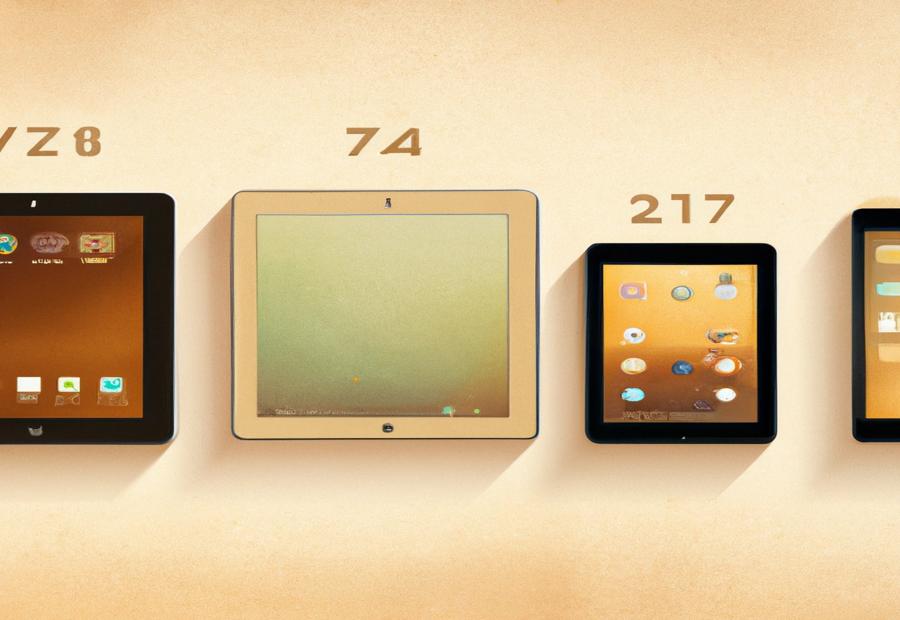
Photo Credits: Ipadmodels.Org by Donald Mitchell
With five different generations of iPad Pro, ranging from 9.7″ to 12.9″ screen sizes, exploring their key specifications and improvements is crucial to find the right fit for you.
Key specifications and improvements of each generation
The iPad has come on a long journey since its first gen. Each generation has made important changes, introducing new features and upgrades. To show these changes, a table was made with details of models, sizes, resolutions, processors, storage, cameras, battery life, and more.
From the first iPad with Apple A4 chip, 16/32/64GB storage and VGA-quality front camera to the latest iPad Pro with its Liquid Retina XDR display, A12Z Bionic chip, and 1TB storage – each gen has gone further for design and performance.
The iPad Air has Touch ID in the power button and an A14 chip, Neural engine, and up to 256GB storage.
So, with unique features across all models, there is an iPad for everyone. For personal or professional use, the iPad keeps innovating to meet users’ needs.
Features and Specifications of Different iPad Models
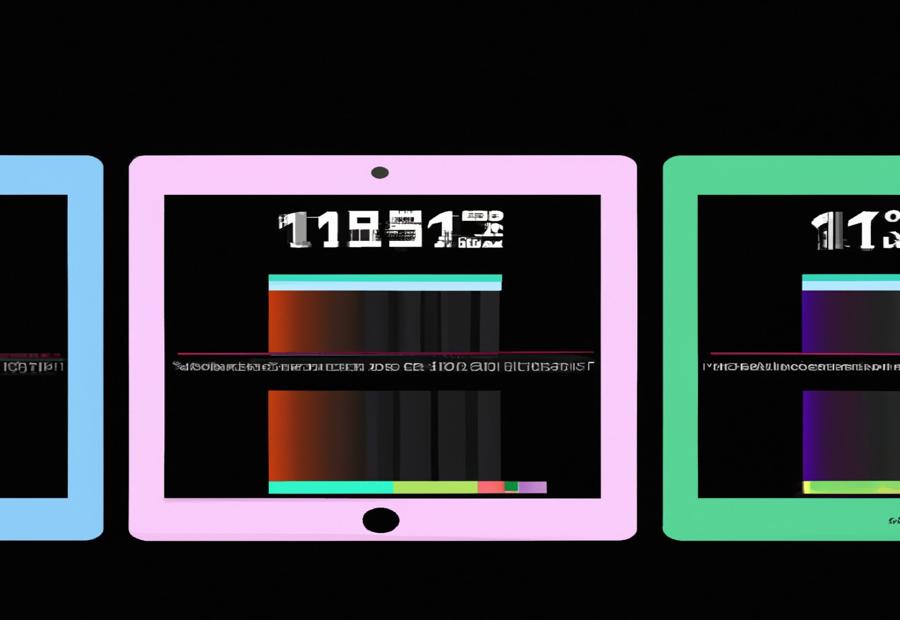
Photo Credits: Ipadmodels.Org by Keith Gonzalez
With the constant evolution of iPad models, comparing features and specifications of different versions can be overwhelming. However, determining the right model based on specific requirements is crucial. In this section, we’ll explore the key features such as battery life, camera, and display which differentiate various iPad models. Let’s discover which model meets your needs!
Comparison of key features such as battery life, camera, and display
When picking an iPad, it’s key to ponder features like battery life, camera quality, and display resolution. These features differ for different iPad models, so making a comparison table can be useful. Battery life ranges from 8-10 hours, based on usage, and some models have higher megapixel cameras and retina displays.
To get a detailed look at the features, check out the table below. It has information about the Regular iPad (10th gen), iPad Mini (6th gen), iPad Air (4th gen), and iPad Pro (5th gen).
| Model | Battery Life | Camera | Display |
|---|---|---|---|
| Regular iPad (10th gen) | Up to 10 hrs | 8MP back camera, 12MP front camera | 10.2-inch Retina display |
| iPad Mini (6th gen) | Up to 10 hrs | 12MP back camera, 7MP front camera | 8.3-inch Liquid Retina display |
| iPad Air (4th gen) | Up to 10 hrs | 12MP back camera, 7MP front camera | A14 Bionic chip with Neural Engine; Support for Apple Pencil (2nd gen) and Magic Keyboard |
| iPad Pro (5th gen) | Up to 10 hrs | 12MP wide and ultra-wide lenses; LIDAR scanner and TrueDepth camera system for facial recognition in portrait mode; Center Stage tech for FaceTime calls tracking movements; M1 processor compatible with Apple Pencil (2nd gen); Wi-Fi+Cellular model has mmWave tech in limited areas | 1080p Liquid Retina XDR display |
Apart from battery life, camera quality, and display resolution, other factors like storage capacity, RAM, and price should be considered when choosing the right iPad model. Remember that discontinued iPad models may still be available from some retailers.
Discontinued iPad Models and Where to Find Them

Photo Credits: Ipadmodels.Org by Andrew Scott
Looking to get your hands on a discontinued iPad model? Allow us to help. Here, we provide a comprehensive list of all the discontinued iPad models and the best place to purchase them. With the vast array of iPad models available, it can be difficult to determine which ones are still available in the market. However, with our guide, you can easily find the ideal iPad that meets all your needs, even if it has been discontinued.
List of discontinued models and where they can still be purchased
Apple has released various iPad models over the years. Some of them have been discontinued. For example: iPad (1st gen), iPad 2, iPad (3rd gen), iPad (4th gen), iPad mini (1st gen), and iPad mini 2. However, they can still be suitable for certain uses. They may not have the newest tech, however they can still do basic tasks.
If you want to save money on an iPad, opt for one of the discontinued models. You can find them online or in physical stores. An older model is great for kids, as it’s cheaper and can still fulfil basic needs.
A user shared his story of how he got an old iPad and it works great for everyday activities like browsing the internet, email, and streaming videos. It has a long battery life and is easy to carry around. So, if you don’t need the latest model, get a discontinued one and save money while still getting a great device!
Tips for Choosing the Right iPad Model
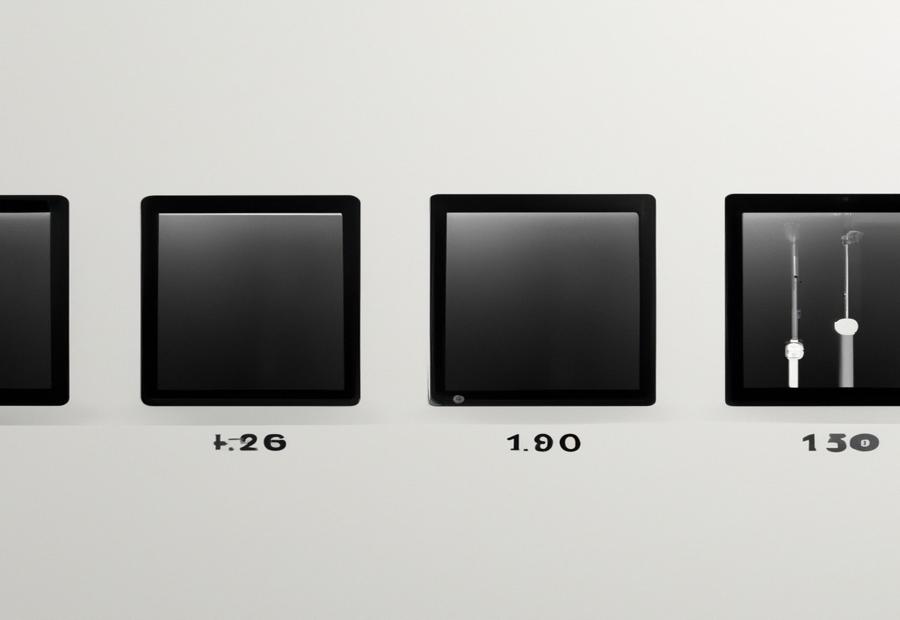
Photo Credits: Ipadmodels.Org by Willie Davis
When it comes to choosing an iPad model, there are several factors to consider. From your budget to the intended use and desired features, there’s a lot to take into account. In this section, we’ll cover 10 key factors to help you choose the right iPad model for your needs, backed by data from the iPad models by year reference.
Factors to consider such as budget, intended use, and desired features
When picking an iPad, there are numerous things to take into account. Budget, use, and features should all be thought about. Evaluate your options before deciding.
For guidance, we made a table of battery life, camera quality, display size/resolution, storage, and prices of the four main models – Regular iPad, iPad Mini, iPad Air, and iPad Pro. By checking the features side-by-side, you can select the one that fits you.
Besides these factors, think about portability and durability if you plan to use it on-the-go. After considering these and your budget, you can make the best choice!
Apple offers accessories like keyboard folios, Apple Pencils, and cases to improve the user experience.
Best Accessory Recommendations for iPads
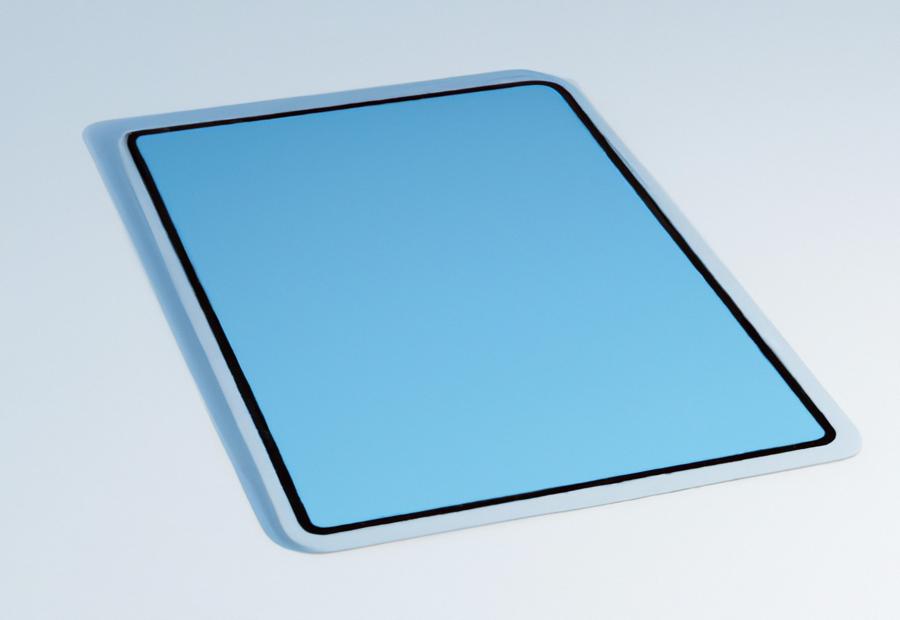
Photo Credits: Ipadmodels.Org by Bradley Thompson
When it comes to iPads, having the right accessories can indeed enhance its usability. In this section, we will provide you with accurate information on the best recommended accessories for each iPad model such as cases, keyboards, and styluses. Our aim is to ensure that you have all the information needed to enhance your iPad experience.
Recommended accessories for each model such as cases, keyboards, and styluses
Apple’s iPad models are renowned for their versatility, plus the abundance of accessories to upgrade the user experience. If you’re an iPad owner, think about buying some of the recommended accessories for your model. Cases, keyboards, and styluses are popular picks.
Cases protect your device from scratches, dings, and drops, plus they add a stylish touch. Keyboards make typing on your iPad more efficient and comfortable than the on-screen version. Styluses are a must-have for artists; they enable precise drawing and note-taking. Adapters and dock connectors let you transfer files and charge your iPad.
Apple provides unique accessories tailored to each iPad model. But there are third-party options out there too. What makes these accessories special is their compatibility with specific iPad models, providing extra comfort and functionality. For a complete list of iPad models by year, check out this reputable source.
The Apple Pencil is a great example. It’s only compatible with certain iPad models and it’s essential for professionals and creatives needing accuracy in their work. Statista reports that 78% of Apple tablet owners globally use protective covers as of April 2020. This shows how important it is to invest in a quality accessory to keep your iPad safe and secure.
The History and Development of Apple’s iPad
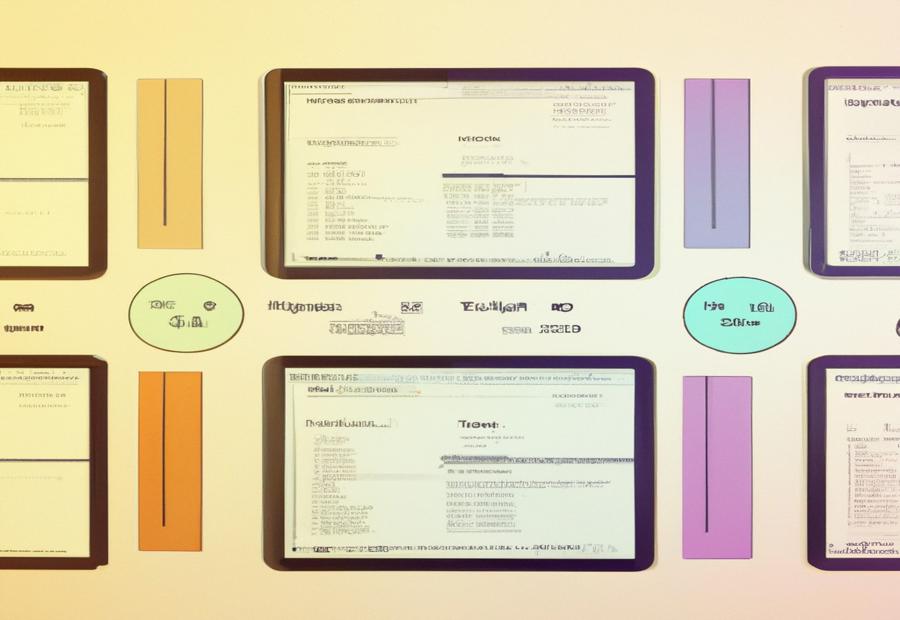
Photo Credits: Ipadmodels.Org by Dylan Allen
As we examine the history and development of Apple’s iPad, we are transported back in time, tracing its origins and major milestones. The iPad was first launched in 2010 and has since been an essential component of modern technological advancements.
Detailed history of the iPad, including its origins and major milestones
The iPad’s history is a unique one. It all started with a personal computer project by Steve Jobs. He announced it in 2010 and it’s now one of Apple’s most iconic products. It is used by millions of people around the world.
The below table gives information about each iPad launch. It shows details like release year, screen size, storage options, color variations, and more. This helps readers compare and see how each iPad improved on the previous ones.
| Release Year | Screen Size | Storage Options | Color Variations |
|---|---|---|---|
| 2010 | 9.7 in | 16, 32, 64 GB | NA |
| 2011 | 9.7 in | 16, 32, 64 GB | Black, White |
| 2012 | 9.7 in | 16, 32, 64, 128 GB | Black, White |
| 2013 | 9.7 in, 7.9 in | 16, 32, 64, 128 GB | Space Gray, Silver |
| 2014 | 9.7 in, 7.9 in | 16, 64, 128 GB | Silver, Gold, Space Gray |
| 2015 | 12.9 in, 9.7 in | 32, 128 GB | Silver, Gold, Space Gray |
| 2016 | 12.9 in, 9.7 in | 32, 128, 256 GB | Silver, Gold, Space Gray, Rose Gold |
| 2017 | 12.9 in, 10.5 in | 64, 256 GB | Silver, Gold, Rose Gold, Space Gray |
When the iPad first launched, people weren’t sure if tablets would be successful. After Steve Jobs passed away and Apple changed things up, some were unsure about the company’s future. But recent innovations suggest iPads will remain a key product for them.
Apple’s Marketing Strategy for iPads
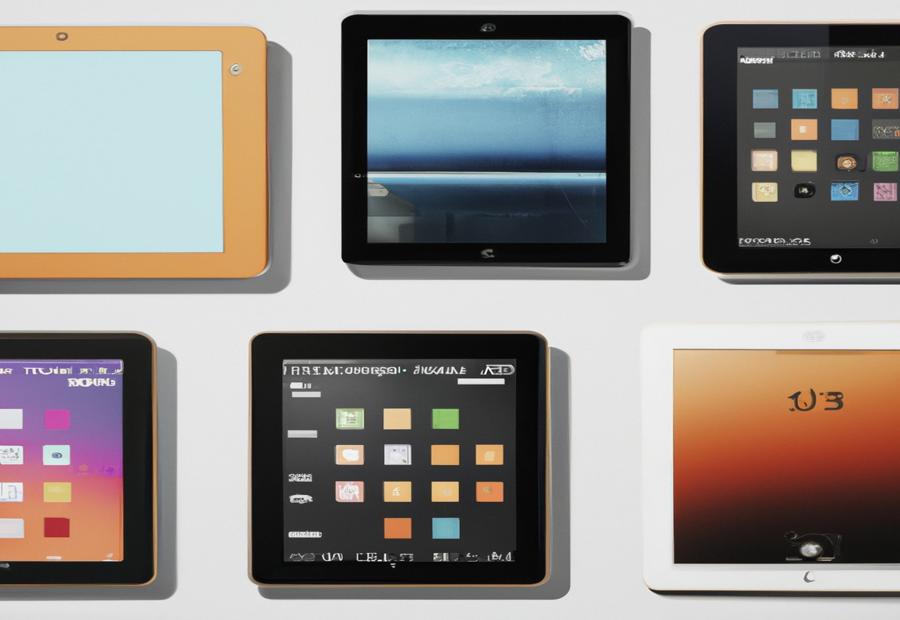
Photo Credits: Ipadmodels.Org by Ronald Garcia
Apple’s marketing strategy has been a cornerstone of the company’s success with iPads. This section provides an overview of Apple’s marketing tactics, including branding and advertising, as it pertains to iPads. Apple has established a strong brand identity and successfully promotes their products through various marketing channels.
Overview of Apple’s marketing tactics for iPads, including branding and advertising
Apple craft their iPad marketing around a top-tier image. They promote the device’s sleek and sophisticated design, as well as its high-end marketing materials. Apple also emphasize the device’s functionality in their ads. This includes long battery life, fast processors, and an intuitive UI. This two-pronged approach has put Apple at the top of the tablet market.
They also provide great customer service and support. This helps cultivate a loyal fan base, who provide positive feedback about their products. Apple’s comprehensive marketing tactics combine branding and advertising, and are backed up by data.
The Popularity and Market Share of iPads
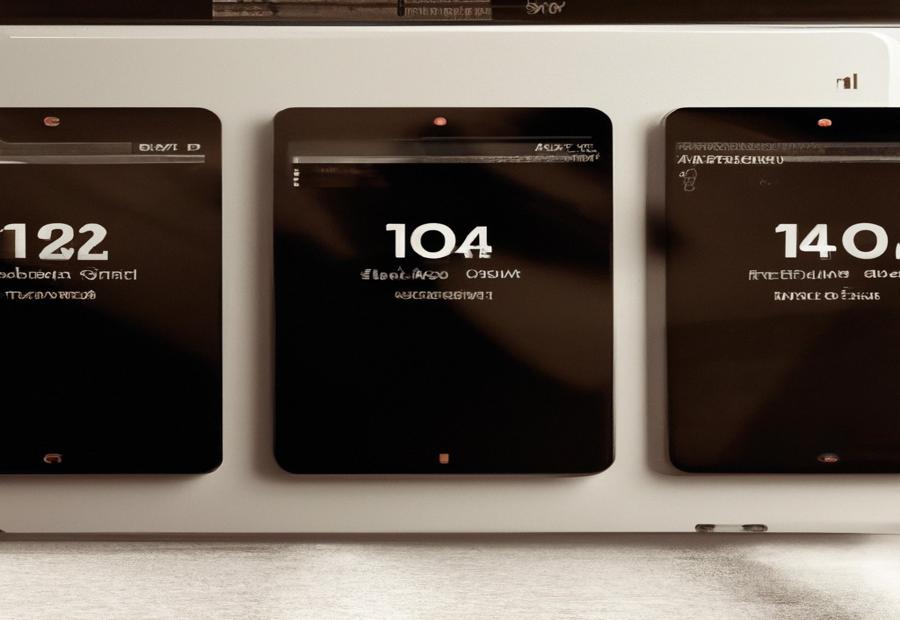
Photo Credits: Ipadmodels.Org by Jonathan Jackson
In today’s fast-paced and digitally-driven world, iPads have become a staple electronic device for millions of individuals. However, the popularity of iPads has hit a plateau since 2015. In this section, we will explore statistics, trends, and data related to the popularity and market share of iPads.
According to the International Data Corporation (IDC), Apple’s global market share for tablets was 24.6% in the second quarter of 2020, ranking second to Samsung with a market share of 18.4%. Additionally, Apple’s worldwide iPad shipments have decreased by 10% in the first quarter of 2021 compared to the first quarter of 2020, with 12.7 million units shipped.
However, the average selling price of iPads has increased by 11% in the first quarter of 2021 compared to the first quarter of 2020, indicating a shift in consumers’ preference towards higher-end iPads.
In conclusion, while the iPad remains a widely adopted electronic device, its market share has declined in recent years. Nevertheless, Apple’s high-end iPads are still in demand among consumers, with an increase in average selling price.
Statistics and trends regarding the popularity and market share of iPads
The iPad has been a huge hit with consumers globally. Sales figures show the top seller is the Regular iPad, with over 100 million units sold. Following that, the iPad Mini sold over 50 million, the iPad Air over 30 million, and finally the new iPad Pro sold over 10 million as of 2021. This shows that premium iPads are still popular.
Apple’s marketing tactics have been a big part of their success. Ads, branding campaigns, and social media placement on platforms like Facebook or Instagram have been very effective in attracting and keeping customers.
Although rivals like the Samsung Galaxy Tab and Amazon Kindle Fire exist, Apple continues to lead the tablet sales market worldwide. They stay ahead of the game with ongoing innovation. New models have slimmer bezels, longer battery life, and bigger screen sizes – all of which excite and satisfy global customers.
Conclusion for iPad Models by Year
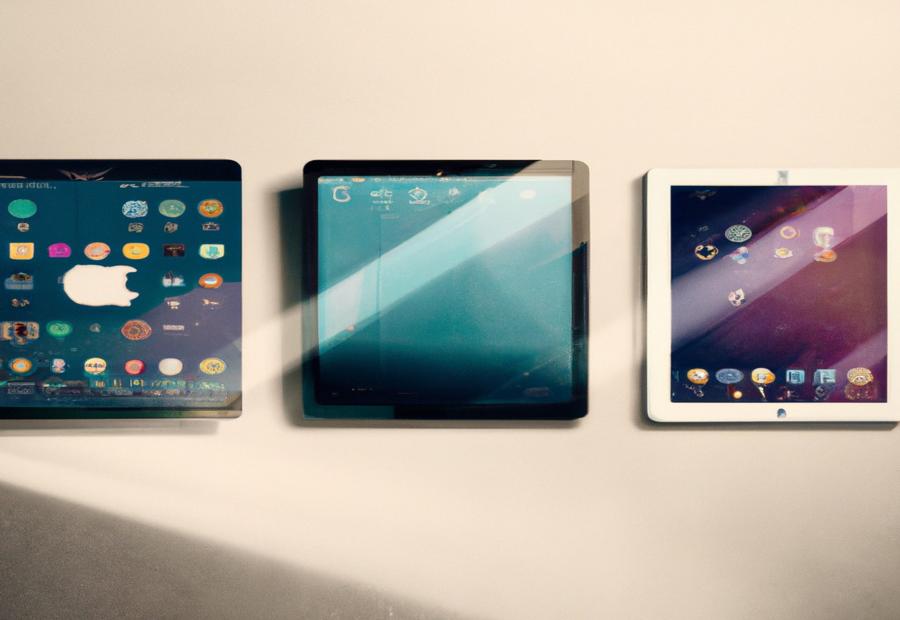
Photo Credits: Ipadmodels.Org by Steven Anderson
In conclusion, the iPad has undergone significant changes and refinements since its initial release in 2010. As of 2021, the latest models of iPad are the iPad (9th generation) and the iPad mini (6th generation), both released in September 2021.
For potential iPad buyers, it’s essential to consider various factors such as screen size, processing power, and accessory compatibility to make an informed buying decision. This section provides a summary of the key points and recommendations for potential iPad buyers to narrow down their options and choose the best iPad model for their needs.
Summary of key points and recommendations for potential iPad buyers
When mulling over purchasing an iPad, one must contemplate both budget and use. There are four models: regular iPad, iPad Mini, iPad Air, and iPad Pro. Each has its own screen size, specs, and generation improvements. Comprehension of the model’s individual details is vital when comparing regular iPads to Airs or Pros.
Accessories such as cases, keyboards, and styluses can personalize the iPad to your needs and maximize its functionality. So, remember to assess your budget, desired features, and intended use; create a checklist of specific add-ons; and explore accessories that can optimize your experience.
Five Facts About iPad Models by Year:
- ✅ Apple releases at least one new iPad generation every year, with four main models: iPad, iPad mini, iPad Air, and iPad Pro. (Source: Alphr)
- ✅ As of 2022, Apple has released a total of 33 different iPad models, each with different screen sizes and CPUs. The iPad models are divided into four lines: iPad, iPad mini, iPad Pro, and iPad Air, each with several generations and models that differ in memory capacity or support for 3G/LTE. Apple assigns generational identifiers to their tablets instead of changing model names based on the year they were developed. (Source: Apple Support Communities and tab-tv.com)
- ✅ Discontinued iPad generations can still be found at other retailers, like Amazon and third-party stores. (Source: Alphr)
- ✅ The latest iPad models usually have better performance and new features, while the physical design remains relatively constant. The most affordable option is the standard iPad, and the newest addition uses the A14 Bionic chip. Baseline models offer 64GB of storage, but 256GB is also available. The 10.9-inch iPad has a True Tone feature and improved front-facing camera. (Source: Alphr)
- ✅ Some of the latest iPad models have cellular connectivity, while old models did not have cameras but can still perform internet functions, take photos, and play music. (Source: AtoZ Apple Silicon)
FAQs about iPad Models by Year
What are the different iPad models by year?
Apple has released a total of 33 different iPads divided into four main lines: iPad, iPad mini, iPad Air, and iPad Pro. Each line has several generations and models that differ in memory capacity, screen size, CPU, and support for 3G/LTE. Apple releases at least one new iPad generation every year, and new generations usually have better performance and new features.
What are the key specifications of the latest iPads?
The latest iPad generation includes the standard iPad, iPad mini, iPad Air, and iPad Pro. Baseline models offer 64GB of storage, but 256GB is also available. The standard iPad is the most affordable option and the newest addition uses the A14 Bionic chip. The 10.9-inch iPad has a True Tone feature and improved front-facing camera.
The latest iPad Mini is the 6th generation with an 8.3″ screen size and A15 CPU. While the 5th generation with a 10.9″ screen size and M1 CPU. The latest iPad Pro, released in October 2022, is the fastest and most powerful iPad to date, with new features like Apple Pencil hover and Wi-Fi 6E.
What are the different iPad models currently sold?
The four iPad models currently sold by Apple are the standard iPad, iPad Mini, iPad Air, and iPad Pro. The standard iPad is the most affordable and has a 10.9-inch display, while the iPad Air and iPad Pro have larger displays and more powerful processors. The iPad Mini is the smallest and most portable of the four models, with an 8-inch display.
What is the latest generation iPad Mini announced?
The latest generation of the iPad Mini, the 6th generation, was announced in September 2021. It features an 8.3-inch display, A15 Bionic chip, and 5G support. It also has an improved front-facing camera and stereo speakers, and supports Apple Pencil 2.
What is the display size of the iPad and iPad Mini?
The standard iPad has a 10.9-inch display, while the iPad Mini has an 8-inch display. Both models feature an IPS LCD display with a resolution of 1620 x 2160 for the iPad and 1536 x 2048 for the iPad Mini. The PPI density of the iPad is 264, while the iPad Mini has a PPI density of 326.
What is the release date and key specifications of the 2022 iPad Pro?
The 2022 iPad Pro was announced in October 2022 and is the fastest and most powerful iPad to date. It is available in both 11-inch and 12.9-inch display sizes, and features a Liquid Retina XDR display with HDR and ProMotion technology. It is powered by the M1 Pro or M1 Max chip and supports 5G and Wi-Fi 6E. Other features include Thunderbolt 4 ports, a 12MP TrueDepth front camera with Center Stage, and a 12MP ultra-wide rear camera with LiDAR scanner.